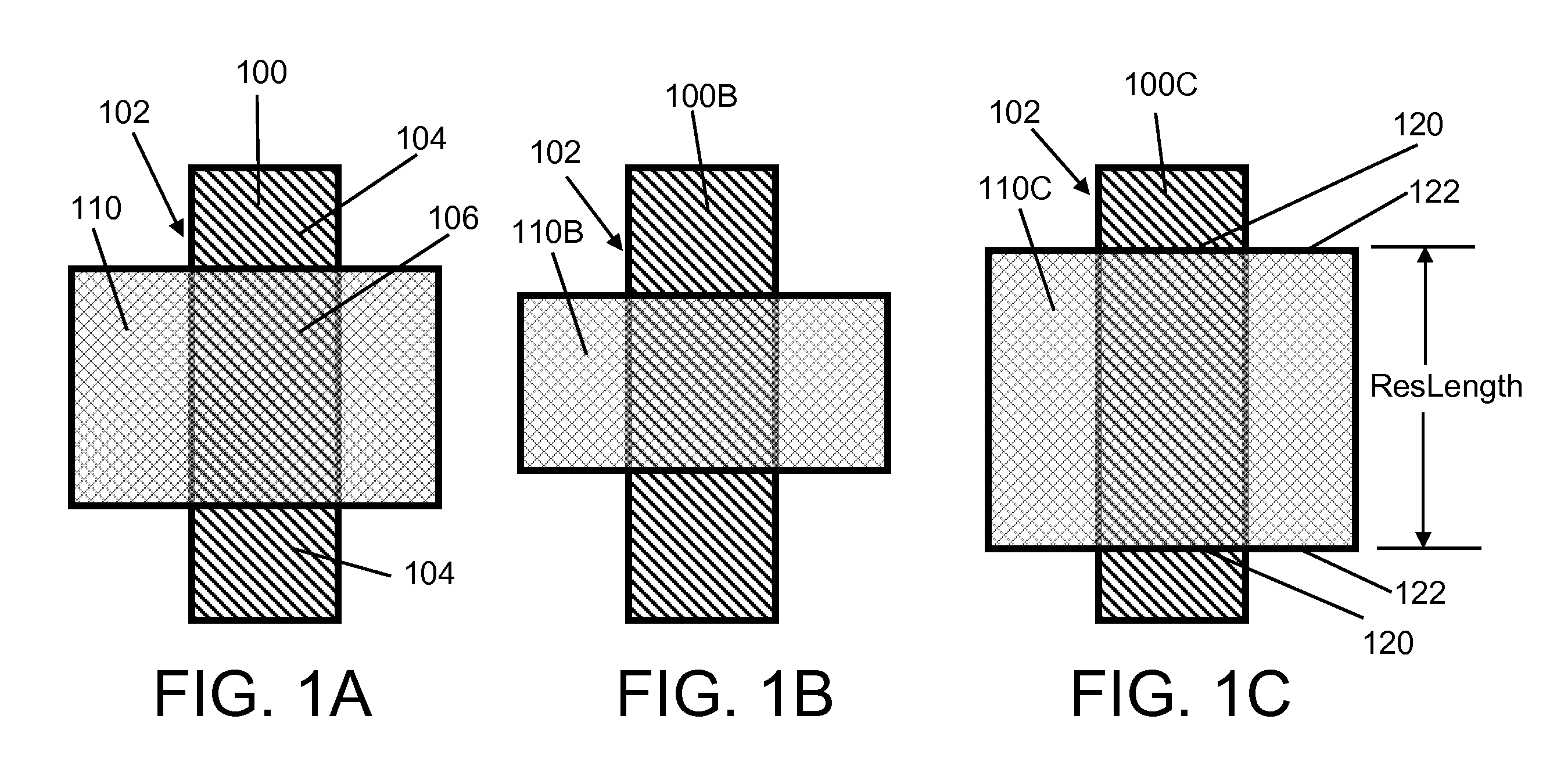Method of adjusting buried resistor resistance
- Summary
- Abstract
- Description
- Claims
- Application Information
AI Technical Summary
Benefits of technology
Problems solved by technology
Method used
Image
Examples
Embodiment Construction
[0010]Referring to FIGS. 1A-1C, one embodiment of a method of adjusting the resistance of a buried resistor 100 is illustrated. In one embodiment, buried resistor 100 is an OP resistor formed in a semiconductor 102 (including 104 and 106, collectively). However, the teachings of the invention are applicable to other types of buried resistors. Semiconductor 102 may be either a polyconductor such as polysilicon or an active region of monocrystalline silicon.
[0011]In FIG. 1A, a silicidation blocking mask 110 is used to define buried resistor 100 in semiconductor 102. Silicidation blocking mask 110 may include, for example, one or more of silicon nitride, silicon dioxide and silicon oxy-nitride. Silicidation blocking mask 110 may be formed at any number of stages, for example, during formation of spacers (not shown) for FETs. At this stage, according to one embodiment, semiconductor 102 already has any implanting present necessary to generate its core film resistance value. Buried resis...
PUM
 Login to View More
Login to View More Abstract
Description
Claims
Application Information
 Login to View More
Login to View More - R&D Engineer
- R&D Manager
- IP Professional
- Industry Leading Data Capabilities
- Powerful AI technology
- Patent DNA Extraction
Browse by: Latest US Patents, China's latest patents, Technical Efficacy Thesaurus, Application Domain, Technology Topic, Popular Technical Reports.
© 2024 PatSnap. All rights reserved.Legal|Privacy policy|Modern Slavery Act Transparency Statement|Sitemap|About US| Contact US: help@patsnap.com









